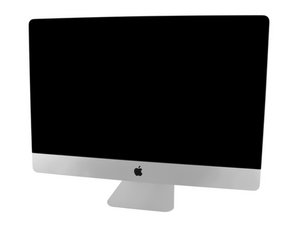Dual drive setup- PCIe SSD with SATA 3 SSD
I’m looking to upgrade my iMac which has begun to age. I have the 27 inch iMac (mid 2015) with 3.3 GHz i5 with 8 GB RAM. I bought it with a 1 TB HDD and have noticed that this has now slowed to the point that it makes daily tasks cumbersome.
After doing some research, i’d like to add a PCIe SSD (250 GB or 500 GB) for a quick boot up and use with apps, and then had a large 3 TB HDD for storage. The PCIe SSD that I am thinking of using is and original OEM used drive (https://beetstech.com/product/ssd-replac...) or the Feather M13 SSD (https://fledging.net/feather-m13-ssd-tur...). I’d like to use an original OEM 3TB drive as the storage drive (https://beetstech.com/product/hard-drive...)
From what I can tell, it is a lengthy process to install a PCIe, but I am willing to do it (my machine is no longer under warranty). From what I can tell, these PCIe SSDs referenced are compatible (it seems to match up with what I found here (https://beetstech.com/blog/apple-proprie...). I just want to make sure I’ve covered all of my bases before committing the funds to this project. Any comments on if my line of thinking is correct? Thanks in advance for any help.
Update (05/02/2020)
So I followed these instruction given in the guide to add a blade SSD and a larger 3 TB HDD. Two additions that I did was to add 2 more 4 GB sticks of RAM that I got from BeetsTech. And to clean up the CPU and GPU thermal paste since I had things opened up (which now I may regret doing).
After following the steps to replace all the parts (motherboard, power supply, speakers etc.) the iMac won’t turn back on. There was nothing out of the ordinary that occurred during the process (that I noticed).
Do you have any recommendation on how to troubleshoot which step maybe the problem? (i.e. CPU not working, RAM malfunction, etc.). I checked to make sure that the socket I was plugging into was live since that was the most obvious.
Hope i didn’t do irreparable damage! Lol. Oh well, it was an effort to extend the life of an aging machine and I can always get a new one, although I’d love to fix this.
Best
Questa è una buona domanda?

 1
1 
 329
329  971
971
2 Commenti
@smauger - Wow you did a lot of change all at once!
Generally I recommend taking baby steps doing one or two things then testing before doing more.
I'm going to guess the most probable area is your CPU is not mounted properly. These CPU's are not easy to get back in as still work.
So lets see if we get any clues, with the display removed you'll find a set of five LED's on the top right edge of the logic board, reading left to right are any lit?
da Dan
Problem solved! It looked like the cpu was a little off center when i opened it up again and yes, I think I bit off more than I could chew! Thanks for the tips again
da Stuart Mauger